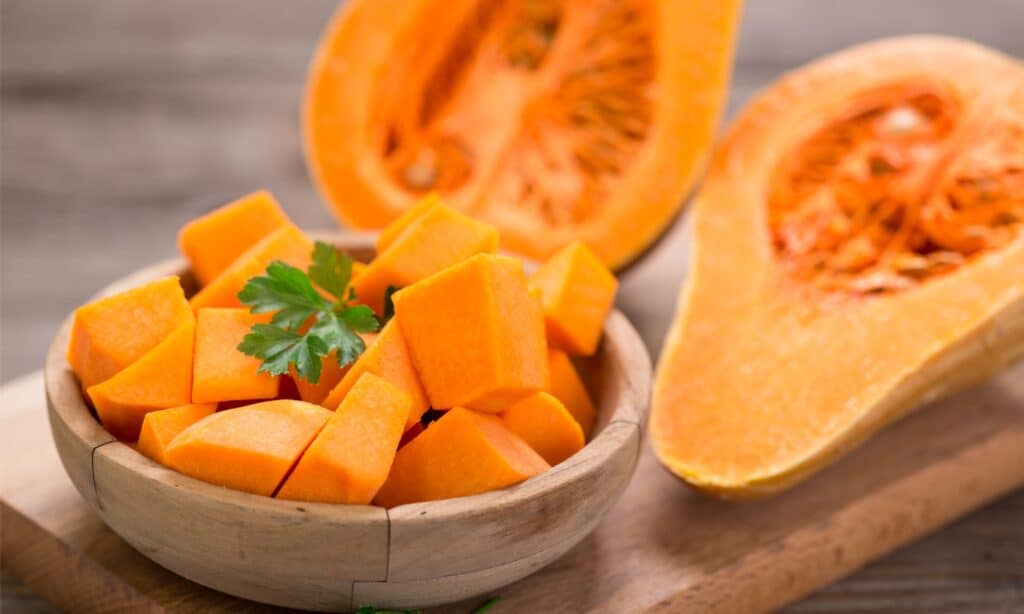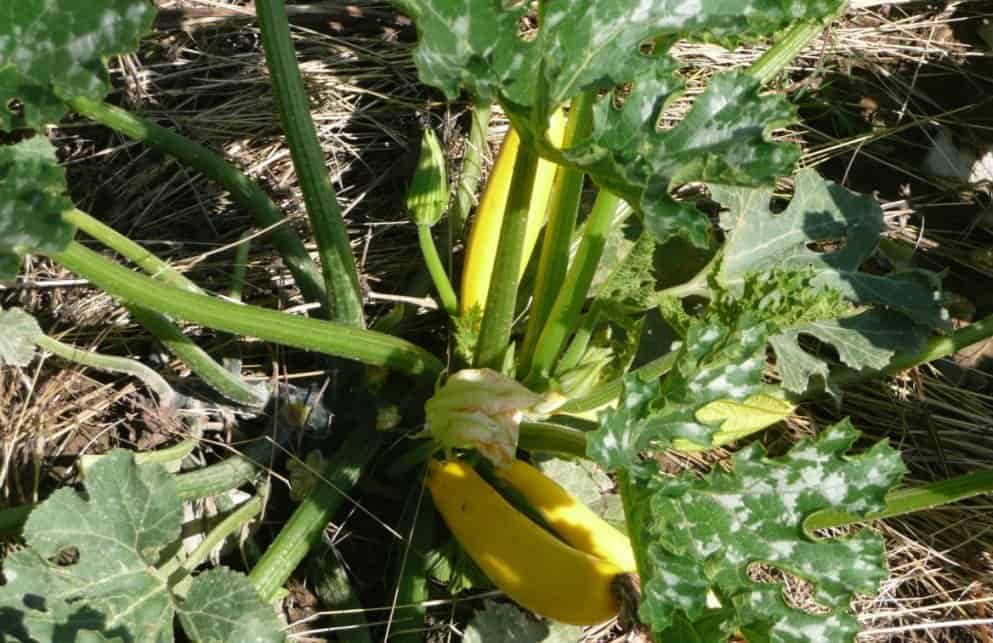Squash is one of the most nutritious and delicious vegetables on the market today. Regularly eating squash can help you maintain a healthy weight, avoid cardiovascular diseases, and increase flexibility and strength in your back. This fruit is a great antioxidant and is rich in vitamins A, B, C, and minerals. Did you know that humans are not the only ones who love squash? Animals love them too! Vegetables like squash or zucchini are part of the diet for many animals, including rabbits, raccoons, rats, squirrels, and other animals like dogs. Yes, dogs can eat squash too!
These vegetable plants are easy to cultivate in your backyard. However, it is essential to know which squash to choose. There are several types of squash, and each differs in color, shape, size, taste, and cultivating techniques. Some of these variations of squash are categorized into summer and winter varieties. Yellow squash is a cultivar of Cucurbita pepo and is categorized as summer squash. Butternut squash is a variety of Cucurbita moschata and is categorized as winter squash. Before discussing the key differences between yellow squash and butternut squash, let’s see how we can distinguish between summer squash and winter squash.
Comparing Summer Squash vs. Winter Squash
| Summer Squash | Winter Squash | |
|---|---|---|
| Squash Variants | – Yellow squash, also called straightneck squash – Crookneck squash – Pattypan squash – Cousa squash – Tromboncino | – Butternut squash – Acorn squash – Carnival or Dumpling squash – Delicata squash – Spaghetti squash – Kabocha – Honeynut squash |
| Characteristics | Soft skin, tender flesh, moist | Hard shell, fibery flesh, and dry |
| Plant | Usually features a bushy growth | Vines |
| Days to Harvest | 50 to 65 days; Best harvested while young | 60 to 110 days; Harvested in the mature stage |
Comparing Yellow Squash vs. Butternut Squash

| Yellow Squash | Butternut Squash | |
|---|---|---|
| Classification | Cucurbita pepo variety | Cucurbita moschata |
| Plant Description | Annual, Sprawling vine | Annual, Vine with climbing tendrils |
| Origin | North America | Central and South America |
| Uses | Can be eaten cooked or raw, and usually added to pasta replacement, usually frozen to last until winter | Can be eaten cooked or raw; the flesh can be roasted, sauteed, pureed, mashed, or baked. The leaves can be used for salads, and the seeds are toasted or turned into oil. It is also used interchangeably with pumpkin |
The Key Differences Between Yellow Squash vs. Butternut Squash
Yellow squash and butternut squash are both from the Cucurbita genus. Still, they are two different types of squash. Yellow squash is a summer squash, which means its outer skin is soft, and its flesh is juicy and tender. Butternut squash is a winter squash with a hard shell. Let’s discuss in depth what makes them different from each other.
Yellow Squash vs. Butternut Squash: Classification

Butternut squash is a variety of
Cucurbita moschata.
©iStock.com/pilipphoto
It is essential to know the difference because squash has wide varieties and cultivars. The term “squash” is a collective name for many species in the Cucurbita genus, including zucchini, pumpkins, and others. Cucurbita pepo and Cucurbita moschata are species that belong to the Cucurbita genus. Yellow squash is a variety of Cucurbita pepo. Other varieties of Cucurbita pepo are zucchini, pumpkin, and acorn squash. On the other hand, butternut squash is a variety of Cucurbita moschata. Other varieties of Cucurbita moschata are calabaza and honeynut squash.
However, aside from their taxonomic ranking, squash species are categorized into summer squash or winter squash, depending on their harvested season.
Yellow Squash vs. Butternut Squash: Characteristics

Yellow squash is a type of summer squash.
© – License
Yellow squash is a type of summer squash. Summer squash has soft skin that is moist and flavorful. It is often harvested while immature and eaten while it is still tender. It does not have a tough rind, so it can be eaten raw. There are many types of yellow squash. Some grow naturally through open pollination, while some are hybrids that are a product of cross-pollination. Other sources list a selection of yellow summer squash varieties:
1. Yellow crookneck
- Early Yellow Summer Crookneck is an early variety of yellow crookneck squash that is open-pollinated. From the name itself, this squash grows from bushes and produces light-yellow, curved-neck squash with creamy white flesh and a buttery taste. You can easily grow this high-yielding plant in your home garden.
- Sundance is a hybrid variety of yellow crookneck summer squash, which means it was cross-pollinated. This prolific plant is perfect for your home garden.
2. Yellow straightneck
- Early Prolific Straightneck is an open-pollinated summer squash. This squash can grow up to 12 to 14 inches long but is generally better to harvest when it’s four to eight inches long. It has a straight neck, and its flesh is tender and succulent.
- Goldbar squash is a long summer squash with edible golden yellow skin. It has creamy white flesh and a firm and succulent texture. It also has a nutty-sweet flavor.
Butternut squash is a type of winter squash. It is harvested when it reaches maturity. Butternut squash, like other winter squashes, has tough rinds. There are several varieties of butternut squash available in the market today. Here are some butternut squash varieties:
- Early Butternut is a hybrid variation of butternut squash that matures earlier than the classic. It is one of the first butternut varieties and has a sweet, nutty flavor.
- Butterbush is a variety of butternut squash that grows on a compact, bushy plant, which makes it suitable for containers and small gardens. This squash has tan-colored skin and deep red-orange flesh and weighs about one to two lbs.
- Ponca is a variety of butternut with beige skin and light orange flesh. Its fruit has a thick neck, and the bottom part is round.
- Puritan is an open-pollinated variety of butternut squash. Its flower is attractive to bees, butterflies, and birds. The shape of its fruit is similar to Ponca, which has a thick neck and a round bottom.
- Supreme butternut squashes are hybrids with thick necks. These squashes are usually uniform in size.
- Ultra butternut squash is a variety that yields the largest butternut fruit, about six to 10 lbs long.
- Waltham butternut squash is an open-pollinated variety with a sweet and nutty taste. It has tan skin and orange flesh, thick necks, and a rounded bottom.
- Zenith is a butternut squash variety that yields fruits weighing two to three lbs.
Up Next:
- Spaghetti Squash vs. Butternut Squash: What’s the Difference?
- Butternut Squash vs. Sweet Potato: What’s the Difference?
- Acorn Squash vs. Butternut Squash: What’s the Difference?
The photo featured at the top of this post is © iStock.com/pilipphoto
Sources
- NC State University Extension, Available here: https://plants.ces.ncsu.edu/plants/cucurbita-pepo/
- NC State University Extension, Available here: https://plants.ces.ncsu.edu/plants/cucurbita-moschata/
- University of Illinois Extension, Available here: https://web.extension.illinois.edu/veggies/ssquash.cfm
- My Garden Life, Available here: https://www.mygardenlife.com/plant-library/3918/cucurbita/pepo/sundance
Thank you for reading! Have some feedback for us? Contact the AZ Animals editorial team.






